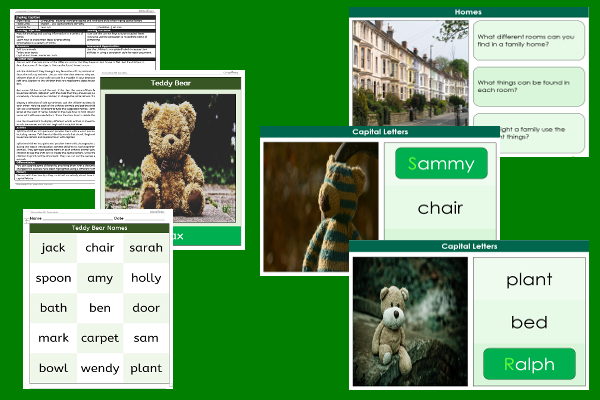Lesson Two – Typing Capitals

This computing teaching pack for Key Stage One gets the children to develop word processing and keyboard skills when typing capitals for different letters of the alphabet to match the names of teddy bear toys.
The class can identify and practise changing a selection of lowercase letters into capitals using the correct keys on a computer keyboard when typing someone’s name.
Download this teaching pack including a lesson plan, classroom activities and an interactive presentation to develop word processing and keyboard skills when typing capitals for different letters of the alphabet to match the names of teddy bear toys
Activities in this teaching pack include display posters to identify and explain how to type the correct capitals for different letters of the alphabet and a template to practise changing a selection of lowercase letters into capitals to show the names of teddy bears.
The interactive presentation gets the children to explore how to develop word processing and keyboard skills when typing capitals for different letters of the alphabet.
This lesson is part of a computing scheme of work to get the children to practise structuring and formatting different documents to make labels describing rooms and objects that can be found in a range of family homes. There are teaching activities for shared learning, differentiated worksheets to support independent learning and interactive presentations to introduce concepts and key skills.
-

Money Coin Sums
Practise identifying, combining and recording sets of coins that can make matching sums that can be used when shopping for different products
-

Maths Number Assessment
Assess abilities in working with numbers to solve abstract and contextual problems when calculating sums, products and quotients using different techniques and methods
-

Animal Lists
Investigate how to compile lists using commas to present information about some of the special animals that live in habitats around the world
-

English Spelling Assessment
Assess abilities in spelling different vocabulary words based on the National Curriculum programmes of study for Key Stage One
